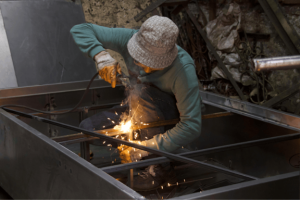Last Updated on October 30, 2025 by teamobn
Starting out in real estate can feel overwhelming. You’re not just looking for a property – you’re trying to find the right market, the right tenants, and a way to make sure the numbers work.
Still, some cities stand out for their balance of opportunity and stability. One of those places is Austin. For first-time buyers, Austin offers a mix of property types, renter profiles, and neighborhood styles.
This article will walk you through why this market works well for beginners and what steps to take when you’re getting started.
Contents
1. Different Property Types to Match Your Budget
Not every investor wants to start with a big single-family home. Austin gives you other options. Condos and apartments in places like The Domain or Mueller offer lower maintenance and appeal to professionals or students. Townhomes [A1] in neighborhoods such as South Lamar or Pflugerville are popular with small families or couples.
If you’re interested in long-term tenants, you might lean toward single-family homes. These properties often attract renters who want space and are willing to commit to a longer lease. On the other hand, if flexibility or short-term leasing sounds better, a downtown condo might be a better fit.

Whatever your budget or comfort level, Austin has a property type that can work.
Whatever your budget or comfort level, Austin has a property type that can work.
2. Rental Rates That Support Steady Income
Austin’s rental prices vary by area and property type.
A two-bedroom condo in East Austin might rent for $2,200. A single-family home in Cedar Park could bring in $2,800 or more. Even a small unit downtown can pull in $1,900 depending on condition and amenities.
Before you buy, run the numbers. Make sure the rent you can realistically charge makes sense with the loan and expenses. Referring to a detailed Austin investment property guide can help you compare rent estimates by location and property type.
3. Neighborhoods That Serve Different Goals
One of the best parts of this city is how varied the neighborhoods are. You’re not limited to one investment style. Downtown is a good spot for short-term or executive rentals. These units often rent fast and bring in high rates, but they also come with higher prices and competition.
South Austin works better if you’re looking for stability. Families and professionals tend to stay longer, which means lower turnover costs and fewer vacancies. In the suburbs—places like Cedar Park, Bee Cave, or Round Rock—you’ll find more space and value. These areas are ideal if you’re thinking long-term and want steady returns.
Choosing the right neighborhood can set you up for success. It’s not just about what looks popular. It’s about what fits your plan as a new investor.
4. Tech Boom Adds Job Security
A strong job base keeps rents steady. Austin’s tech growth does exactly that. Major employers—Apple, Tesla, and Google—keep hiring across engineering, sales, and support roles. Well-paid workers need homes close to work or transit. That demand spreads from the urban core into nearby suburbs. For an investor, job security means tenant security. A tenant with a stable paycheck pays on time and stays longer. You lower your vacancy risk and cut turnover costs. Follow local hiring news and note where new offices open. Properties within a short commute often lease first and command healthier rates.
5. Renters Tip the Balance
More than half of local households choose to rent rather than buy. High prices and tight inventory push many professionals toward long-term leases. Students and recent graduates add to that pool. When renters outnumber owners, investors gain leverage. You can set competitive terms without sacrificing occupancy. Yet high supply keeps you honest—tenants still compare value. Make sure your unit shows well online, offers reliable maintenance, and meets modern standards like fast internet or in-unit laundry. Delivering consistent value keeps tenants happy and protects your cash flow.
6. Simple Upgrades Boost Returns
Raising rent is easier when the property feels updated and cared for. You do not need major remodels to see a lift. Stainless appliances, energy-efficient lighting, and keyless entry are small upgrades that raise perceived value. Fresh paint and durable flooring cut future repair costs and appeal to busy tenants. Smart thermostats help renters manage bills and show that you plan ahead. Calculate the payback period for each improvement. If an $800 washer adds $50 in monthly rent, it pays for itself in under two years. Use data from recent listings to verify that each upgrade supports a higher rate.
7. Condos and Townhomes Ease Entry
Not every beginner wants yard work or large repair bills. Condos and townhomes shrink those worries. Homeowner associations handle roofs, exterior upkeep, and shared spaces. Monthly dues cover the cost, letting you budget with fewer surprises. Smaller footprints also mean lower property taxes and insurance. These savings free cash for future deals or emergency funds. Units in planned communities often include pools or gyms that draw renters who value convenience. Screen the HOA’s financial health before buying; you want low delinquency rates and clear maintenance plans. A stable association helps protect your asset and keeps resale options open.
8. Partner With Market Pros
Local insight closes gaps that online research misses. A seasoned real estate agent tracks micro-trends such as street-level rent shifts, upcoming zoning changes, and new transit routes. A property manager can spot issues before they grow and suggest rent adjustments that match real demand. Both roles free your time to focus on strategy rather than daily tasks. Choose partners who invest in the area themselves; they feel market shifts first.
Together, expert help and solid research move you from a cautious beginner to a confident owner.
Your first investment sets the tone for every deal that follows. Austin offers a rare mix of job growth, rental demand, and property variety that supports steady returns. Focus on neighborhoods that match your budget and tenant goals, run clear cash-flow numbers, and invest in upgrades that tenants value. Lean on local professionals for advice you can trust. With thoughtful planning and a commitment to active management, your entry into this market can become a strong foundation for long-term wealth—without stretching beyond your comfort zone.
Wrapping it up…
Austin is a prime location for real-estate investments due to its rapid growth, fueled by tech giants like Tesla and Apple, creating high demand for residential and commercial properties.
The city benefits from a diverse economy, a favorable business and regulatory environment (including no state corporate or individual income tax), and a thriving real estate market.
Austin’s construction industry is supported by a skilled workforce and significant infrastructure investments.
Additionally, the city’s commitment to sustainable development and green building practices makes it attractive for forward-thinking investors and home-owners alike.
[A1]https://www.architecturaldigest.com/story/what-is-a-townhouse






